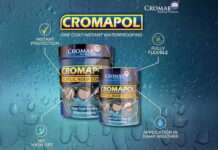This is your Guide to Polycarbonate Sheet for Greenhouses. Not all greenhouses are created equal. The secret lies in their skin. Polycarbonate sheets, to be exact. But why might these clever panels be the best pick for your green haven? And what thickness do you need?
Keep reading our Guide to Polycarbonate Sheet Thickness for Greenhouses to learn more about this material, which type’s best for greenhouses, and which thickness to go for to boost your green-thumb efforts without the fuss.
What’s a Polycarbonate Sheet for a Greenhouse?
Polycarbonate sheets equip your greenhouse. These tough panels fend off the elements, from hail to harsh sun, keeping your tomatoes toasty and your tulips tender.
Beyond polycarbonate, we also stock other roofing sheets, like rugged corrugated sheets and sturdily-built decking boards. They’re brilliant for any project you have brewing in your garden.
What Type of Polycarbonate is Best for a Greenhouse?
Twin-wall polycarbonate is a star. It keeps things cosy inside, no matter the weather outside. It keeps your greens warm, wards off that UV mean streak, and won’t shatter if the weather takes a turn for the worst. Great for peace of mind and plant prosperity.
Safety first! Make sure you can look after your greenhouse safely with our robust ladders, they’re just the job for hard-to-reach repairs or tweaks.
How Thick Should Polycarbonate Sheets Be for a Greenhouse?
When decking out your greenhouse, thickness matters. A casual gardener? Then go for a 4mm twin-wall sheet – it’s sturdy yet lithe enough for easy DIY fitting. But if you’re playing the long game or dealing with frosty forecasts, stepping up to 10mm can shield your botanical buddies better.
It’s a buffer against the cold and keeps your Eden efficient, though thicker sheets might pinch a bit of your sunlight. Balance is key. You want it thick enough for protection yet slim enough to keep the sun streaming in.
Is 6mm Polycarbonate Good for Greenhouses?
Spot on for most needs, 6mm polycarbonate is a fine balance of durability and cost-effectiveness. It offers better insulation than thinner options, keeping your plants cosy while still letting plenty of light through. Ideal for seasonal and year-round greenhouses, it’s strong enough to handle a bit of rough weather without breaking the bank.
What’s The Difference Between 4mm and 6mm Polycarbonate Greenhouse?
The main difference? Thickness spells toughness and insulation. The 4mm sheet is lighter, cheaper, and great for low-demand setups, while the 6mm offers improved thermal retention and resilience, better suiting climates that swing from sizzling summers to freezing winters.
What Thickness Sheeting for Smaller Greenhouses?
For smaller, more intimate green spaces, a 4mm polycarbonate sheet often suffices. It’s light, less expensive, and provides ample protection and light transmission for tender shoots and sprouts. This thickness is just the thing for gardeners experimenting with their green thumbs without committing to the hardier infrastructure of thicker sheets.
Ideal for seasonal use or starter greenhouses, these thinner sheets allow for a more forgiving setup. They’re a walk in the park to install and adjust as you learn the ropes of home gardening.
They’re durable and flexible, making them terrific for areas with milder weather conditions or if you might not need year-round planting. Plus, their clarity maintains that classic, crisp greenhouse look, letting in plenty of sunlight to keep your plants cheerful and strong.
The Best Thickness for All-Year-Round Greenhouses
If you’re committed to a year-round growing season, going up to a 10mm polycarbonate is a wise choice. This thickness strikes a balance, giving substantial insulation to maintain a stable internal climate through scorching summers and biting winters.
While it slightly diminishes light transmission compared to thinner sheets, the trade-off is a weighty boost in energy efficiency. It keeps heat in during the icier months and stops the greenhouse from becoming an oven when the sun is high. So, your plants thrive in optimal conditions all year.
What Are the Disadvantages of a Polycarbonate Greenhouse?
No garden party without a clean-up, right? Polycarbonate greenhouses are brilliant at climate control but can be a magnet for condensation. They might also scratch a tad more than your traditional glass conservatory. Keep a cloth handy and consider a scratch-resistant coating to keep your view of paradise clear.
Do Polycarbonate Products Have Good Light Transmission?
Undeniably. Even the basic polycarbonate sheet models boast about 80% light transmission. That’s more than enough to make your ferns frolic.
Upgrade to something like a twin wall, and you’ll have magnificent UV protection without dipping too much into your daylight quota. The thicker the panel, the more light it absorbs.
So, if you’re gunning for growth, balance thickness with your sunlit needs to ensure photosynthesis doesn’t stop.
| Thickness of sheet | Visible Light |
|---|---|
| Axiome 6mm Twinwall | 81 |
| Axiome 10mm Twinwall | 81 |
| Axiome 16mm Twinwall | 74 |
| Axiome 25mm Twinwall | 62 |
| Axiome 35mm Twinwall | 51 |
Do Polycarbonate Products Lose Heat?
Polycarbonate’s U-values, which measure heat loss, are decent but not iron-clad. A 10mm sheet lets less heat escape than thinner types, offering a snugger space for your veggies without needing a hefty heating bill.
| Thickness of sheet | U-value W/m2 |
|---|---|
| Axiome 6mm Twinwall | 3.5 |
| Axiome 10mm Twinwall | 3.0 |
| Axiome 16mm Twinwall | 2.3 |
| Axiome 25mm Twinwall | 1.7 |
| Axiome 35mm Twinwall | 1.3 |
Is Multiwall Sheeting Overkill for Greenhouses?
Multiwall is the heavy-duty choice, fab for weathering the storm but at the cost of light. It’s excellent if you’re after robust protection and are prepared to supplement with some grow lights.
Efficient water drainage is vital. Check out our guttering solutions to keep water flow smooth and directed away from your plant sanctuary.
Can I Use Bronze Sheeting for My Greenhouse?
Indeed, you can. Polycarbonate is tough – resisting impacts from harsh hail to branches better than glass. It’s the bodyguard for your blooms when severe weather sets in, ensuring your green haven stands firm against the elements.
Is Polycarbonate Sheeting Durable in Bad Weather?
Most definitely. Polycarbonate stands up to the test, shrugging off storms, high winds, and flying debris easily. It’s a shield for your greenhouse. It keeps your plants protected whatever the British weather has in mind.
The Takeaway
Choosing the right polycarbonate thickness doesn’t merely mean enduring the elements. Actually, you need to create a sustainable environment where your plants can flourish. Whether it’s a light 4mm or a robust 10mm, each thickness has its place.
Fancy finding the spot-on fit for your green dreams? Check out our website – it’s time to get your garden growing with the best sheets on the market.
More questions? In need of a little more advice on choosing the right materials? Our friendly experts would love to help – just get in touch with them to make your greenhouse dream come true. We hope you enjoyed this Guide to Polycarbonate Sheet Thickness for Greenhouses.





